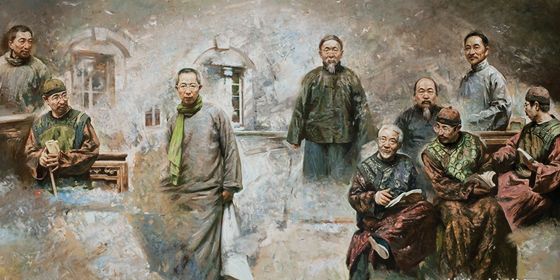Top 10 regional merchant groups in ancient China
- By Zhang Junmian
 0 Comment(s)
0 Comment(s) Print
Print E-mail China.org.cn, November 16, 2011
E-mail China.org.cn, November 16, 2011
Business has played a significant role in promoting China's social development, even in ancient times, when industry and commerce was despised and ignored to a certain extent in a largely agrarian country.
Merchant groups, or business guilds, were native-place businessmen groups formed on the basis of lineages in a spontaneous manner, with the aim of helping each other in doing business.
It was during the Ming and Qing dynasties (1368-1911) that at least ten distinctive regional merchant groups came into being and became prosperous for almost 600 years due to the great changes in the country's social and economic climate, most notably the dawn of capitalism. During this period, trade activities of the ten most powerful merchant groups spanned across the whole country. They played an important role in establishing foreign trade and promoting China's shift towards a market economy.
Longyou Group 龙游商帮
Longyou Group originated in the Southern Song Dynasty (1127-1279) and thrived during the middle of the Ming Dynasty (1368-1644). It was famous for its operations in jewelry, book publishing and paper-making industries. Also known as Quzhou Group, it originally got its name from the Ming-era Quzhou Prefecture in Zhejiang Province, with Quzhou, Changshan, Jiangshan, Kaihua and Longyou counties under its jurisdiction.
Unlike most of their peers who tended to invest in the real estate, pawning and lending business for stable revenues, sensitive Longyou merchants found that handicraft production and mining could generate more profits. Subsequently, they involved themselves in the relevant sectors, and changed commercial capital into industrial capital, which brought employment into the feudal economy. The group also absorbed businessmen from other merchant groups to promote its development. Doing so, it evolved into a powerful guild even though they originally came from a remote area without official support or strong clan forces.








Go to Forum >>0 Comment(s)